African Kings

Horus
Horus Djer or Itit (his nomen) was either the second or third ruler of the 1st Dynasty. His reign came after that of Narmer and Aha, though which of these two kings actually founded the first dynasty is unsure. A majority of modern scholars seems to believe that Aha was the first king of that dynasty and so was the ruler who united Upper and Lower Egypt. That would make Horus Djer, his apparent heir, the second ruler. He and the following kings are largely responsible for the consolidation of the unified state of Egypt.
Scholars believe that Djer was probably Manetho's Athothis, and that he ruled for 57 years. Most of the information we have on this ruler comes from ivory and wood labels found at Abydos and Saqqara. Regrettably, the hieroglyphs on the labels represent an early state of writing, so are difficult for Egyptologists to make out. An inscription on ivory found at Abydos with Djer's name in a serekh seems to tell us that he visited Buto, an early capital of Egypt, and Sais, both in the Delta of lower or northern Egypt. At Saqqara we find a wooden label also bearing his name that seems to refer to a ceremony connected with human sacrifice, a practice that was quickly abandoned in Egyptian culture. However, about his large tomb at Abydos (Tomb O) are 300 burials of retainers who seem to have perished at the same time as the principle internment of Djer.
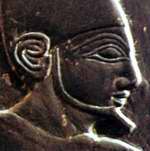
Aha
1st Dynasty
Many people believe that Aha was actually King Menes of Memphis. Menes was the founding king of the 1st Dynasty and was the first king to unify Upper and Lower Egypt into one kingdom. Ancient Egypt's most predominant form of civilization began with his crowning, and did not end permanently until the beginning of the Roman era, which started with Augustus Caeser. Menes founded the city of Memphis, and chose as its location an island in the Nile, so that it would be easy to defend. He was also the founder of Crocodopolis. During his time, the Egyptian army performed raids against the Nubians in the south and expanded his sphere of influence as far as the First Cataract.
His chief wife was Queen Berenib, though she was not the mother of his heir, King Djer, and his mother was probably Neithotepe, if that lady was not also his wife. His death is a mystery, for, according to legend he was attacked by wild dogs and Nile crocodiles in the Faiyum. Aha's tomb resides at Saqqara, the famed necropolis of Memphis.
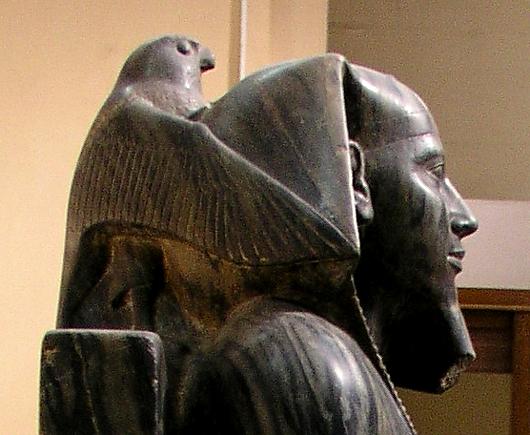
Pharaoh Djoser of Egypt (5018-4989 BC)
Builder of the highly celebrated Saqqara Complex
With the Negro Third Egyptian Dynasty (5046-4872 BC) there was a change in public administration. The Prime Minister now led the bureaucratic structure. The great ruler of this dynasty was Pharaoh Djoser. During his 29 years, Egyptian power was felt in Lower Nubia and in the Sinai region. In the latter region, Egyptian miners worked the copper and turquoise mines. There were developments in art. Statues for the first time were made life-sized. Some stone statues were carved for private persons. There were other developments in relief sculpture. As an example of this, the wooden plaques recovered from the tomb of Hezyre were distinguished and show this artistic development.
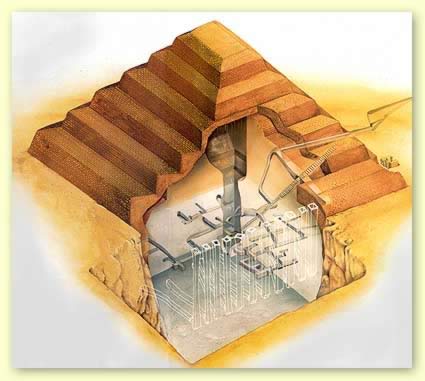
The Step Pyramid
The city of Saqqara was originally south of the Memphis necropolis. Here Djoser built a complex that replaced an older temple of wood, brick and woven mats. Imhotep, his Prime Minister, designed the building. This structure contained Egypt's first pyramid. The Step Pyramid and its surrounding complex represent major developments in technological achievement and artistic sensibility. The Step Pyramid was built of six steps. Its shape represents the primeval mound of creation. It contained chapels of blue tiles that depict the Heb-Sed festivals. There was also a life-sized statue of the king, which Mr Rice feels "deserves to be recognized as one of the wonders of the world." The symbolic meaning behind the construction is that the pharaoh was continually having his vitality renewed and has thus become immortal. Mr Rice further notes that: "The Djoser complex is unique. Once again, it is totally without precedent, not merely in Egypt but in the entire world. For centuries its high white limestone curtain walls and the elegant, superbly proportioned kiosks, magazines, and shrines which were built within the walls made it the most remarkable building in the world: perhaps indeed it remains the most remarkable ever built."

The Famine Stela
This period was not always tranquil and positive, however. There is a famous document called the Famine Stela associated with Pharaoh Djoser. It describes a famine that lasted seven years caused by low Nile floods. At the end of the famine the king offered land to the priests of Khnum of Nubia. They helped to end the famine.
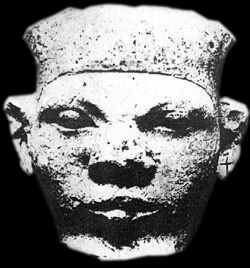
Menes 3100 BC
According to ancient sources, Menes was the founder of a unified Egypt, the first king of the 1st Dynasty. Actually, Menes is the Greek form of the name provided by the third century BC Egyptian historian, Manetho. Alternative forms include Min (provided by Herodotus), Minaios (provided by Josephus), and Menas (provided by Diodorus Siculus), and there are other variations as well.
It seems almost certain that the various Greek forms of the name render the Egyptian name Mni, found in the Abydos and Turin king lists, although the etymology of the name is problematic. Some have proposed a connection with the verb, "to endure", while others wish to connect it with the Egyptian indefinite pronoun mn, meaning "so-and-so", that is, a substitute for a forgotten name. One scholar, James Allen, has sought to link the name Meni with the Egyptian name of the city of Memphis (Mn-nfr), which Menes is said to have founded.
According to Menetho, Menes founded a dynasty of eight kings from this. Manetho gives Menes a reign of about sixty years (sixty-two years according to Africanus, sixty according to Eusebius). His principal achievement is said to have been the foundation of Memphis, on land reclaimed from the Nile by means of the construction of an immense dike. Manetho reports that Menes campaigned abroad, which we now know is very possible. Diodorus Siculus says that he was the first law-giver and that it was he would establish the divine cults in Egypt. He is also said by Pliny to have invented writing, which is highly improbable. Manetho also tells us that Menes was eventually carried off by a hippopotamus.
What seems clear to us is that Menes must have been another name given to one of the better attested kings of the 1st Dynasty, if he indeed was not a legendary figure composed of several of them. Many scholars do believe that he represents a specific king, but who exactly this might be is an argument almost as old as Egyptology itself. Today, the two primary candidates are Narmer and Aha. We are more certain, though not entirely, that these two individuals reigned successively, with Narmer preceding Aha. If Narmer is considered to be Menes, then Aha would be the second ruler of the 1st Dynasty. Otherwise, Narmer would be the last ruler of the Predynastic Period, or as some have suggested.
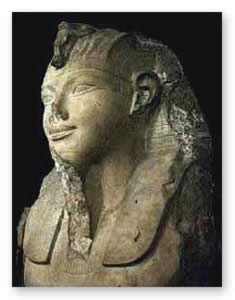

Akhenaten / Amenophis/ Moses (Pharoah of Egypt/Kemet 18th Dynasty) 1336-1334 BC
It is no secret that Egypt has a rich and far reaching history, what is not widley known is that most of the stories that we have grown up with from the Bible are legends that have been stolen directly from Egypt's past.
The Great Pharoah Akhenaten was the first person who thought up the concept of there only being "One God". At a period when Kemet/Egypt was worshipping a pantheon of gods this pharoah risked his throne and his life to tell his subjects that "ATEN" is the only God and should be worshipped above all others. if one researches the life of this Great Pharoah you will find not just similarities but direct suppression of his thinking his name and what he stood for, by the early church and the corrupt one that still exists today.
Along with his wife Nefertiti he establised a new way of worship that had never existed before ATEN was seen as the bringer/giver of all life, without which we could not exist. Ahkenaten was so passionate about his belief that he stopped patronising the temples dedicated to the Egypts supreme deity at that time "AMUN"/AMUN-RA.
He left Egypt's capital city Thebes taking his court with him and established a new capital city at Tel el Armana.
Here he lavished his favours on those who practised the new religion.
Pharaoh Amenemhet III of Ancient Egypt (ruled 3242-3195 BC)
Defender of the Sudanese Kingdom of Kush against Roman aggression
Amenemhet III, the last great ruler of the Egyptian Twelfth Dynasty (3242-3195 BC), built two important pyramids, at Hawara and Dashur. The former monument had a sepulchral chamber weighing a staggering 110 tons of yellow quartzite. He built a hall of granite pillars for Sobek. At Medinet Madi he built a temple to Renenutet, the Goddess of the harvest.
At Hawara he built the Labyrinth with its massive layout, multiple courtyards, chambers and halls. The very largest building in antiquity, it boasted 3,000 rooms. One thousand five hundred were above ground and the other one thousand five hundred were underground. Herodotus, the notable Greek historian of antiquity, saw it in ruins three thousand years later. He was still somewhat impressed: "I visited this place, and found it to surpass description; for if all the walls and other great works of the Greeks could be put together in one, they would not equal, either for labour or expense, this Labyrinth; and yet the [Greek] temple of Ephesus is a building worthy of note, and so is the temple of Samos. The pyramids likewise surpass description, and are equal to a number of the greatest works of the Greeks; but the Labyrinth surpasses the pyramids."
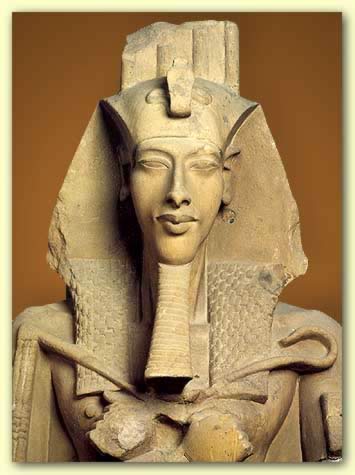

The History of Amun-RA
Amun-Ra was associated with the Egyptian monarch, and theoretically, rather than threatening the pharaoh's power, the throne was supported by Amun-Ra. The ancient theology made Amun-Ra the physical father of the pharaoh. Hence, the Pharaoh and Amun-Ra enjoyed a symbiotic relationship, with the king deriving power from Amun-Ra. In return, the king supported the temples and the worship of Amun. In theory, Amun-Ra could even take the form of the king in order to impregnate the chief royal wife with the successor to the throne (first documented during the reign of Hatshetsut of the New Kingdom). Furthermore, according to official state theology during the New Kingdom, Egypt was actually ruled by AMUN-RA through the Pharaohs, with the god revealing his will through oracles.
AMUN is one of the eight High Gods of the Ogdoad of Hermopolis with his female consort Amaunet (Ament). He was first mentioned in the Pyramid Texts (5th Dynasty, Unas), as a primeval deity and a symbol of creative force. AMUN has status among the primeval deities and protects the gods with his shadow. His worship at Thebes, where the earliest known temple dedicated to Him was located, was only documented from the 11th Dynasty onward. In the 16th Dynasty, with the expulsion of the Hyksos rulers of Egypt, AMUN?S growth was accelerated due to the vindication of both Egyptian power and AMUN-RA as a protector of both the Egyptian state and the monarch. He gained most of his prestige after becoming the principle god of Waset (Thebes, now Luxor) during the New Kingdom, when He was recognized as the king of the gods. AMUN-RA grew so important spiritually and politically by the time of the New Kingdom that Egypt became something of a Theocracy. He actually became a universal God. In fact, by the 25th Dynasty, AMUN-RA was even the chief God of the Nubian Kingdom of Napata and by the Ptolemic, he was regarded as the Egyptian equivalent of Zeusof Greek and Jupiter of Rome.
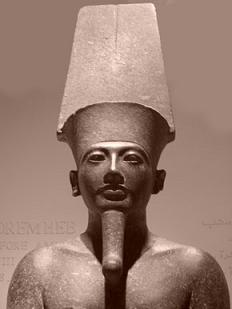
King Affonso I
King Dom Affonso I became King of Kongo in 1506 AD. Like many Africans who became Christians, he was baptised with a Portuguese name. When he succeeded to the throne, he was, however, met with vigorous opposition from his non-Christian brother Mpanzu a Kitima. Prince Mpanzu occupied the capital city, Mbanza Kongo, with the support of the Lord of Kabunga, the traditional priest, and forces of nearly 200,000 men. They viewed the Christian influence as a threat to their power. Affonso, however, triumphed over Mpanzu in battle in spite of the fact that he had inferior numbers of perhaps 10,000 soldiers and 100 Christians, both Kongolese and Portuguese. Affonso attributed his victory to a religious miracle and thus strengthened his desire to spread Christianity in the land. After the battle, Affonso executed his brother but converted the Mani Kabunga. He gave the latter the position of Keeper of the Holy Water. Years later, he built the Church of the Holy Cross to commemorate the miracle.
Affonso I wrote to King Manuel of Portugal requesting that he send priests and technicians to spread Christianity further. Within three years, schools were established in which students were instructed in Portuguese and Christianity. Furthermore, Affonso increased the flow of Kongo students to Portugal and he himself studied Portuguese laws. The Portuguese sent him a collection of these in five great volumes. His aim seems to have been the creation of a Renaissance style Christian state as then existed in Europe. His achievements went beyond this, however. Dr Ehret, an important authority, reports that: "A local body of scribes was trained, able eventually to communicate in written Latin, Portuguese, and Kikongo". By 1516, one source reports that the capital had one thousand students studying grammar, humanities and things of the faith. There were also schools for girls directed by the sister of the king. Finally, Affonso built churches. As well as the Church of the Holy Cross built in 1517, he built the Church of Our Lady of the Victories in 1526. By the close of the century, the capital had six churches.
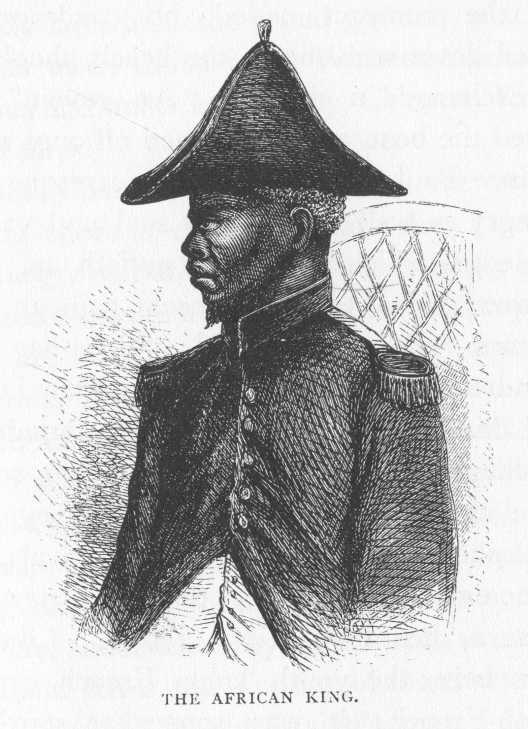
Negus Negaste Ezana of Ethiopia (flourished 330 AD)
Another feature attributed to Ezana's reign was the introduction of a new written script - the vocalised Ethiopic. A refinement of the Proto-Ethiopic/Sabaean script of the Yeha period, vocalised Ethiopic influenced the Armenian and Georgian scripts of Eastern Europe. A Russian historian, Y. M. Khobishanov noted that: "Soon after its creation, the Ethiopic vocalised script began to influence the scripts of Armenia and Georgia. D. A. Olderogge suggested that Mesrop Mashtotz used the vocalised Ethiopic script when he invented the Armenian alphabet".
Several monuments date back to Ezana's time such as the Ta'akha Maryam, the Cathedral of Saint Mary of Zion, several other churches, and also convents. Scholars have attempted to reconstruct the Axumite castle complex of Ta'akha Maryam, now in ruins, using evidence provided by the obelisks and other monuments. The palace was a massive four-towered structure of stone and timber with windows of timber frames. It rose to a lofty height, being of four storeys. Axum also contained the Cathedral of Saint Mary of Zion, one of the oldest Christian cathedrals on Earth. Francisco Alvarez described this monument in around 1520 AD as follows: "In this town, we found a noble church; it is very large, and has five naves of a good width and of great length, vaulted above, and all the vaults are covered up, and the ceiling and sides are all painted; it also has a choir after our fashion. This church has a very large circuit, paved with flagstones like gravestones, and it has also a large enclosure, and is surrounded by another large enclosure like the wall of a large town or city."
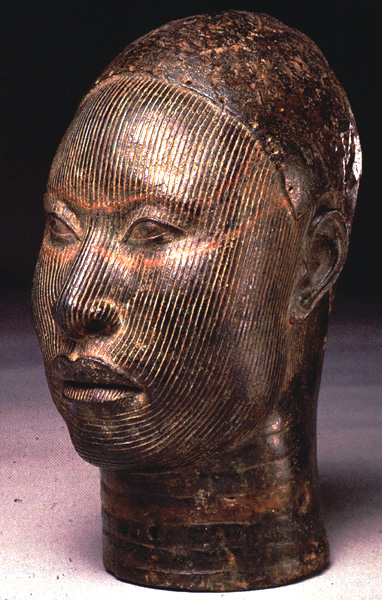
Mai Dunama ibn Salma of Kanem (ruled 1210-1248 AD)
Presided over the first golden Age in the central African kingdom of Kanem
Mai Dunama ibn Salma (Dunama II) ruled from 1210 to 1248. He built Kanem into a great regional power. Commanding 30,000 cavalry and an even larger number of infantry, he conducted warfare in the desert. With camels instead of horses, his war machine campaigned against the entire Fezzan region of southern Libya. Crushed were the Bulala of the east. Pillaged were the Hausa cities of northern Nigeria. This latter group were compelled to pay tribute. Dr Davidson reconstructs a scene of: "Swinging tassels in the dust, harness brasses that glitter against quilted armour long spears pennoned and pointed, brilliant cavaliers, all the creak and swing and clatter and pomp of an aristocratic army saddled for sack and loot: with the footsore plebs in goat-skin, armed with clubs and spears and small hope, trailing out behind - such were the warrior columns of the old Sudan [i.e. Africa], the feudal fire and challenge that were thrown, times without number, against the easy marts and watered villages of one imperial region after another, now with one side winning, now with the other."
Mastery of the trade routes and the spoils of war built large state revenues. Kanemi Muslims established a school in Cairo that gained a considerable reputation. The institution had hostel facilities used by Kanem pilgrims going to or from Mecca or studying at Cairo's Al-Azhar University. Regularly they sent money for its upkeep. In 1246 Dunama II exchanged embassies with Al-Mustansir, the king of Tunis. He sent the North African court a costly present, which apparently included a giraffe. An old chronicle noted that the rare animal "created a sensation in Tunis".
Professor Ronald Cohen penned a good summary of the achievements of this early period in his important study on Kanem-Borno culture: "[B]y the twelfth and thirteenth centuries Kanem became a well-known state in the Islamic world. Trans-Saharan commerce was completely controlled, garrisons were built to protect the trade routes, and treaty relations were established with the Hafsid rulers of Tunis … [A] travel[l]er's house … was constructed in Cairo … At the other extreme of the Islamic world, in Spain, a poet from Kanem was renowned … for his praise songs … This was a great period of Islamic civilization and Kanem played its part in that florescence." Sir Richmond Palmer, the pioneering and erudite authority on Kanem-Borno, seemed equally impressed. In his own words: "[T]he degree of civilisation achieved by its early [rulers] would appear to compare favourably with that of European monarchs of that day." Especially when it is understood that "the Christian West had remained ignorant, rude, and barbarous".
